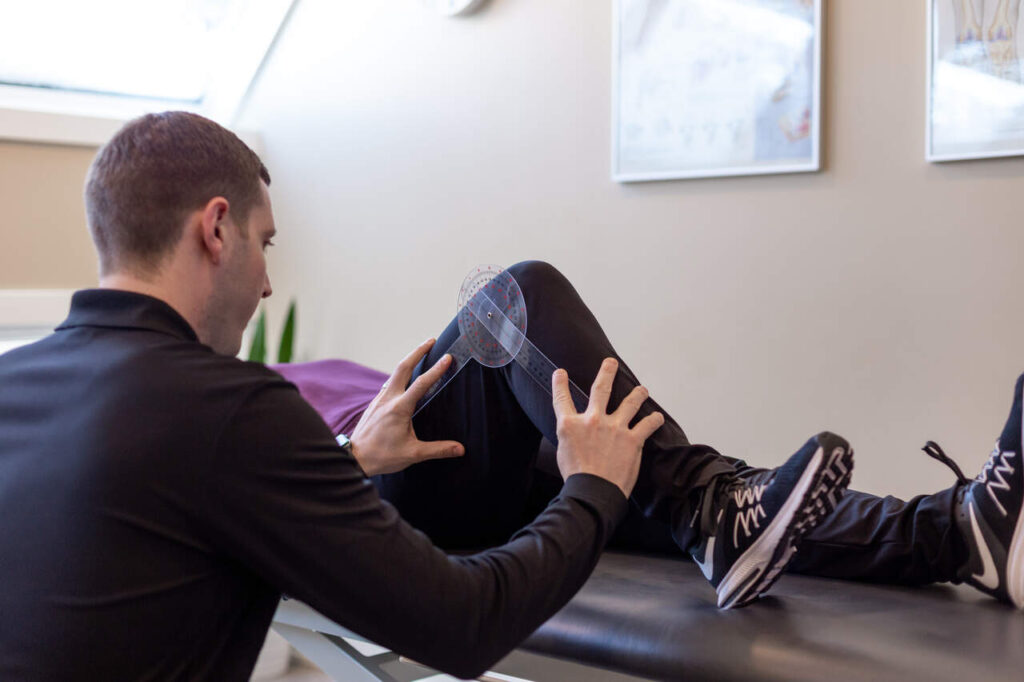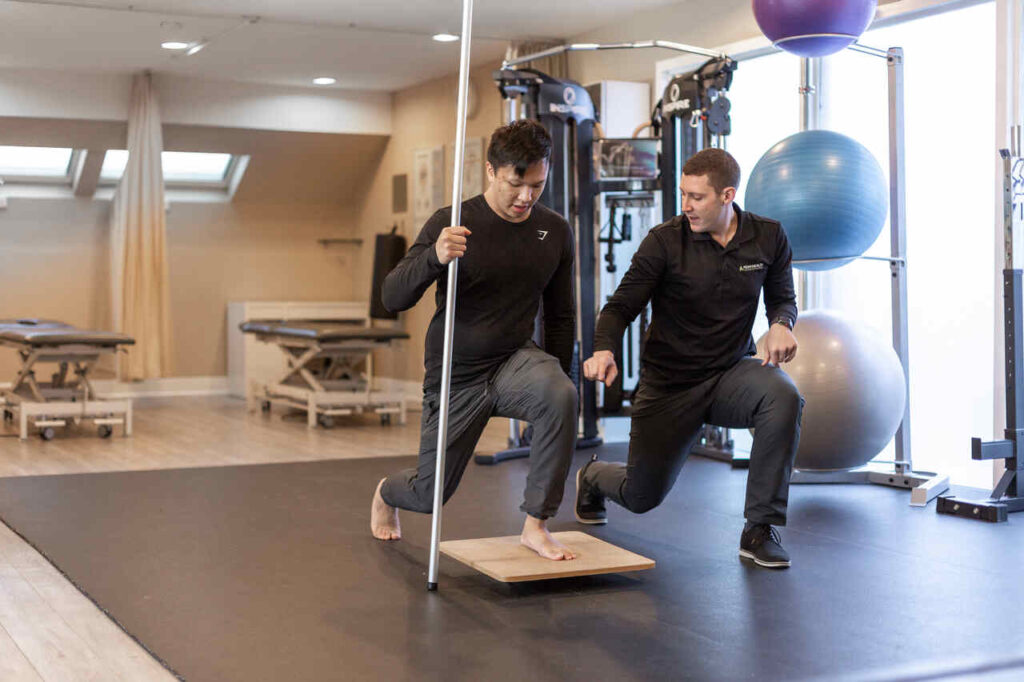Written by Chiropractor Dr. Nathan Boone
Maybe you remember what happened: a twist, a step, a fall. Maybe you don’t! Either way, the discomfort in your knee has morphed from a nuisance into an unrelenting and gnawing pain, present during even the simplest day-to-day tasks.

Knee pain, unfortunately, appears to be a universal consequence of having knees (of which most of us have two!). In fact, a recent review reported that nearly 25% of adults are likely to report an episode of non-traumatic knee pain in a given year.
Infuriatingly, many episodes of knee pain appear to have no specific source, and patients report symptoms of generalized or “moving” pain in the front of their knee that may be aggravated during activities such as squatting, sitting, running, or climbing stairs.
Persistent pain that interferes with activities you love can be a physically and mentally draining experience, leaving you with questions like: What is causing it? How long will it be here? And most importantly: What can I do about it?
PFPS: Patellofemoral Pain Syndrome
In the absence of a clear mechanical or structural issue, health care professionals often provide an intentionally vague diagnosis of Patellofemoral Pain Syndrome (PFPS), sometimes referred to as Runners Knee. PFPS describes this nonspecific experience of pain in the area in front of the knee that can range from annoying to debilitating and may prevent or impair participation in activities from running to working out, to just sitting and watching a movie.
For those experiencing PFPS, there is good news and bad news. The good news is that it can be dealt with. Remember that many people develop knee pain, but most don’t currently have it – this is a testament to its ability to improve! The bad news is that for many people, PFPS is a persistent and recurrent issue that may take time to deal with.
Due to the vague nature of PFPS, we lack a clear picture of all the factors that may be involved; however recent research has dramatically improved our understanding of the condition, what causes it, and how we can manage it!
What Causes Knee Pain?
The most common question patients ask is: why does my knee hurt? Unfortunately, the answer to this question is a bit foggy – but researchers have some good ideas. The leading theory suggests that the pain stems from irritation of the cartilage on the underside of the patella (kneecap).
Abnormal, excessive, or repetitive stresses may lead to softening or deterioration of the top layer of this cartilage exposing the more sensitive surfaces beneath. Although our bodies typically thrive under stress, these persistent forces on the patella don’t allow for the necessary recovery time needed to get stronger, leading to a degeneration process that ultimately results in pain.
Am I At Risk for PFPS or Knee Pain?
“My sister runs every day and doesn’t get knee pain, why does MY knee hurt?” Although these answers are highly individualistic, and you should consult your health care professional regarding your specific situation, there does appear to be some consistent observations amongst PFPS sufferers.
Consistently, those who have, or develop, PFPS demonstrate abnormal biomechanics during lower limb activities as well as deficits in lower limb strength. In other words: they move differently. As the knee joint is a simple hinge connecting the ankle to the hip, it is at the mercy of what goes on above and below it. Poor control and strength of the hip and knee, especially during single-leg activities (like climbing stairs), place the knee in a disadvantaged position which may result in those increased patella forces mentioned earlier!
How To Manage Your Knee Pain
So, what does this mean and what can be done? Any time you experience continued pain or discomfort, visiting your local chiropractor or physiotherapist is always a good idea to get an accurate diagnosis of your knee pain to ensure you are implementing the correct management strategies. Other potential causes of knee pain must first be ruled out before we can call it PFPS! Your professional should work with you to identify the activities that aggravate or relieve your pain, as well as determine any potentially predisposing strength or movement impairments.
Although our understanding of the development of PFPS is sometimes cloudy, the evidence supporting exercise as a treatment tool is crystal clear.
Strengthening programs targeting the muscles of both the thigh (quadriceps) AND the hip (glutes) appear to have the largest benefit for PFPS patients in the short and long term.
Because weakness and poor movement control are culprits in the development and progression of PFPS, the strategic application of strengthening activities should come as no surprise. Ensuring you have an exercise plan that is right for you is the first step.
Although exercise is the most effective single method of managing PFPS, manual therapy techniques including soft tissue massage, joint mobilizations, taping, and even orthotics may be included in treatment plans to help relieve pain and improve function in the short term.
How Long Does it Take to Make Knee Pain Go Away?
Timelines for managing PFPS can range from weeks to months. Many factors may play a role in the duration of PFPS, including duration of symptoms, strength levels, types of activities, genetics, and prior injuries to name a few. Developing frustration with slow progress and persistent symptoms is common, so demonstrating patience is key when beginning the journey of managing your knee pain.
As our understanding of PFPS improves, so will our management techniques. For now, one thing is clear: early intervention of relative rest, exercise, and targeted manual treatments are the best tools we have; but a healthy dose of optimism goes a long way as well.
Final Thoughts
If you are experiencing knee pain and are in search of what direction you should go, book your discovery call today to find out what next steps may be appropriate for you. Our team is always just a phone call away to get you on the right path!
 Peak Health & Performance can help you recover from a wide range of common conditions including:
Peak Health & Performance can help you recover from a wide range of common conditions including:
- Impaired range of motion
- Chronic injuries
- Motor vehicle accident injuries
- Neck pain
- Knee injuries
- Joint pain
- Shoulder pain
- Rotator cuff issues
